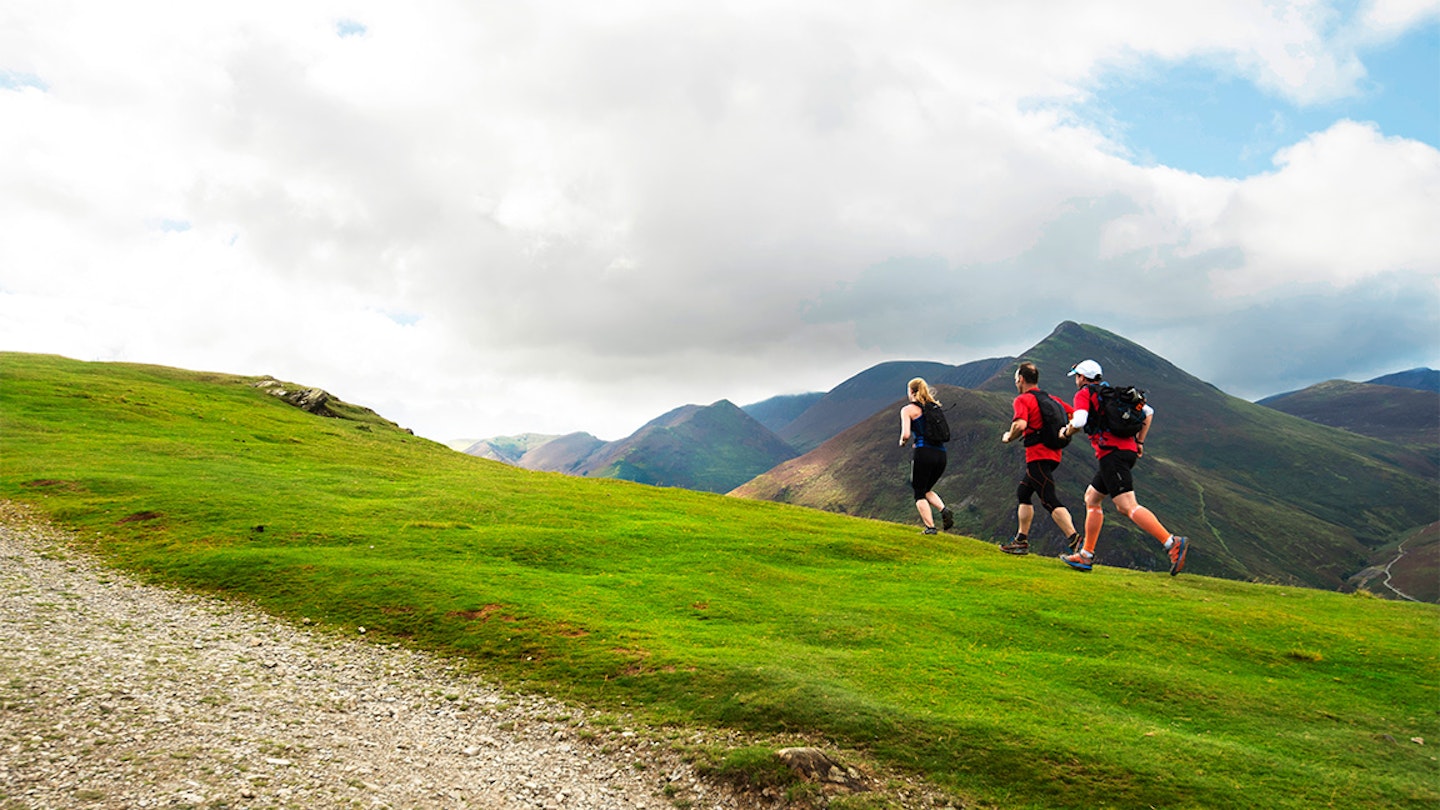After getting an all-clear from breast cancer five years ago, Nicky Spinks became the first woman to complete a Double Bob Graham Round – 132-miles over 84 summits. As part of the Run 1000 Miles Challenge, we share her tried and tested advice on how to fuel successfully for those long endurance runs.
I know that if I’m running for more than an hour I need to fuel. If I eat well, I get stronger throughout the race and can fly past people in the second half, which is a great feeling. Over the years, I’ve honed my nutrition and use the same format every time now.
The only factor I can’t totally control is how my stomach is going to feel on the day. But to counteract any difficulties I have eating or keeping food down, I pack a variety; some I never eat unless I’m running!
When doing an ultra race such as the Ultra Trail du Mont Blanc (UTMB) I have to adapt to the food that is on offer at the checkpoints. Here, it becomes important to be strict with yourself.
Two years ago, I did the L’Echappee Belle as practice for UTMB. I approached nutrition differently and it worked. I finished in 35.34hr without pain, 19th overall and 2nd lady. Here’s my advice for your next long-distance race...

1. The week before
If it’s an ultra race of more than 30 miles starting on Saturday morning, begin ‘grazing’ on the Thursday before, eating smaller meals and snacking in between. If the race is going through the night, eat a little late at night and then again early in the morning to get your body used to consuming and digesting in regular intervals.
2. The day before
Continue the grazing approaching, but eat slightly bigger meals and eat every four hours. I never allow myself to get hungry or over-full. I will include more carbohydrates in my meals and I will also drink water little and often, including one drink made with electrolyte.
3. The evening before
If you have a Saturday race, pack your clothes and food either on Thursday or Friday morning, so that Friday evening is dedicated to relaxation. Have your last big meal at about 7pm – I usually have pasta served with a bolognase sauce, followed by a fruit crumble, and then have another small snack before bedtime.
4. Breakfast
It is usual that I don’t sleep well before a big race, so if I’m awake I will eat a little and read a book. I would normally sit down to eat breakfast at least two hours before the start of a long race; usually porridge. I would then take a teacake, topped with honey and banana, to registration, to eat about an hour before the start.
5. 30mins before the race
Half an hour before the race begins, I would keep trying to eat a little (like a banana) right up until the start of the race.
6. During the race
It is important to eat within the first hour of racing. This is hard to do as the pace is fast and you are unlikely to be hungry, but I think it keeps my digestion working. I make sure I have something close at hand like apricots or a muesli bar – already opened so that I can eat it easily.
For a four-hour race I will eat twice an hour, probably only a gel or some sweets each time. For a longer race I will also eat twice an hour, but one gel and one ‘proper’ food item, such as a muesli bar, banana, rice pudding or something that is on offer at the checkpoints.
7. Immediately after
Here I’m not so strict! There is often a post-race meal provided and as I’m usually starving when I finish, any food is agreeable. I think eating straight away is key to recovery, so I always take my own food (sandwiches, soup or pizza) in case there is no post-race meal on offer.
8. Dinner
I really like to have spicy food – so sometimes I take a homemade salami pizza to eat afterwards. Or I’ll have fish and chips with curry sauce. Or I’ll order a chicken madras curry to eat when I get home!
Note - The views expressed in this article are based on the experience of one person. Especially with fuelling, we are all individual and can react differently to different foods, so it's a good idea to experiement and find what's best for you.
This article is brought to you by the official Trail Running Run 1000 Miles Challenge.

